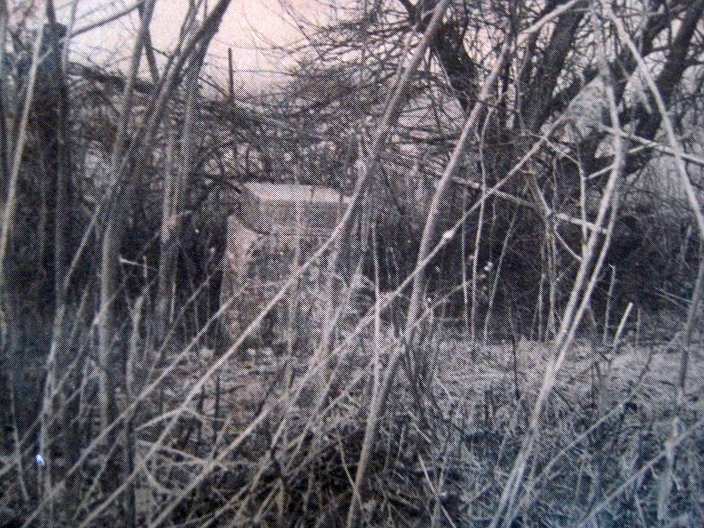CITY’S EARLY HISTORY HIGHLIGHTED AT MEET
HISTORICAL SOCIETY

Photograph “Price Cemetery”
[Welland Tribune, 1 October 1985]
A highlight of the Welland Historical Society meeting held recently at the Museum was the celebration of the birthday of an honorary member, Mrs. Mabel Brown, with a decorated cake and candles.
President George Chipman thanked everyone who participated in the arrangements for the Fenian Raid Tour and picnic; the Rose Festival Quilt raffle and the Celebrity dinner at Julio’s.
A donation to the Museum for hygrometers and dehumidifiers was approved by the Society, as well as brochures in French and English for a walking tour of downtown Welland.
In researching the name of Denistoun Street, Cecil Dyson came up with origin of three other streets as well, all named after members of the Bald Family. He obtained his information at the Welland Public Library in Rice’s History of Welland County and Thorold Township Cenennial year book, he presented a short outline of the Bald family.
A Scotsman, Thomas Bald immigrated to this country in 1784 and settled on the Bald homestead on the Welland River across from the old County Hospital, now Riverside Terrace Apartments.
His son David married Hannah E. Cook of Cook’s Mills who was the first woman teacher in Welland County.
The Balds had a farm in the vicinity of Bald Street and Willliam Bald lived in and possibly built the Presbyterian Manse on Bald Street which gave Bald Street its name.
David Bald had three children, James who J.C. Bald School on Thorold Road named after him; Catherine was remembered by Catherine Street and David Denistoun whose name was given to Denistoun Street.
Denistoun has played an important part in Welland’s history.
In the very early years, there was a dock at the north end of Denistoun on the Welland River and the Bald family owned scows on the River.
It was the home of the Welland County Fairgrounds from 1857 to 1974. The Methodist Episcopal Church and burial grounds was established in 1865 across from the Welland High School and the high school was built in 1879. Also the Electric Steel and metals was built in 1913 with two original Heroult’s electric steel melting furnaces and which produced many thousands of 16 and 18 pound shrapnel shells for the Allies during the First World War.
Harold Fox spoke on the life of David Price who is recorded as being the first white settler in Welland and that an Indian settlement was located at the corner of Jane Street (Now Maple Avenue) and Fraser Street at that time.
He quoted from a copy of the Remanences of John Price and his father David of Welland, written for the Buffalo Express by B.B. Babcock and published in the The Tribune May 14, 1897.
David was born about 1750 in the valley of the Mohawk River near Wellsville, New York.
During an Indian uprising he was taken prisoner by a tribe of Seneca Indians and held seven years.
After his release he was an employee of the Commandant of the military post at Oswego until the close of the war. He then moved to Niagara in New York State and later to Fort George where he worked as interpreter, clerk and storekeeper in the department of Indian Affairs, August 20, 1800 at St. Mark’s Church at Niagara-on-the Lake, he married Margaret Gonder. In 1812 David moved his family to 200 acres of land along the Chippewa Creek, a place known only as Seven Mile Stake.
David’s son John tells of being born in a log house on the south bank of Chippewa Creek, the same location that the Niagara Regional Youth Home is situated on West Main Street. His death occurred Feb. 26, 1841 and his remains were buried in the Methodist Episcopal Church cemetery on Denistoun Street. Hazel Sauer and Emily Laing were in charge of social arrangements for the meeting.
 Subscribe..
Subscribe..
Add A Comment
You must be logged in to post a comment.